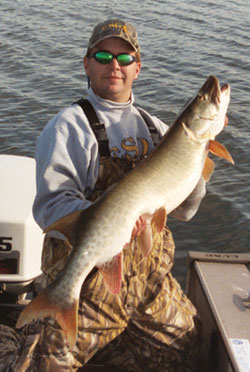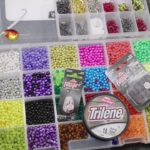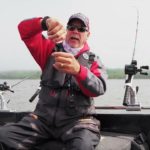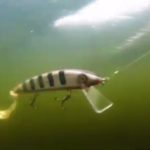Keep it Simple for Early Season Muskies
 For muskie anglers, the problem with a long off season is it gives us a little too much time to think. You can only read and reread articles so many times, hooks can only get so sharp, and a guy can only make so many leaders before it becomes clear you’ve gone beyond getting ready for the season and crossed over into blatant time killing.
For muskie anglers, the problem with a long off season is it gives us a little too much time to think. You can only read and reread articles so many times, hooks can only get so sharp, and a guy can only make so many leaders before it becomes clear you’ve gone beyond getting ready for the season and crossed over into blatant time killing.
So we start thinking. We think about all the new lures we have to try. All the clever, sure fire techniques we read about all winter. Come opening day, we’re going to have a complete plan for guaranteed success. We’ll outsmart them this year…
When it comes to early season muskies, though, the fact is you’re usually better off saving the clever skull work for later in the season, and focusing on the basics. Setting aside extremely difficult conditions like massive cold fronts or colder than normal water from an extremely late spring, the most sensible approach is on that focuses on covering water and seeking out muskies in an efficient, straightforward manner.
Spring muskies are often in transition from spawning areas to summer locations, and as a result can be widely scattered. Muskies may be found spread out across large weed flats where they take advantage of the cover and feeding opportunities created by developing weeds on the tops and inside edges of the flat, roving across large sand and sandgrass flats rousting perch and shiners, traveling along large areas of ‘nothing‘ shorelines adjacent to spawning areas, or cruising shallower weedy bays where warmer water and spawning habitat for forage fish attract and hold wandering muskies for a period of time.
Picking through these area with a slower presentation makes contacting fish holding roving broad flats or traveling from point A to point B an exhausting and inefficient process. Fish you do find may well respond to slower tactics, but locating them is a much bigger challenge than getting them to bite.
Often, the best approach is to simply snap on a bucktail and go. Bucktails cover water extremely efficiently, and can be fished quickly when covering large stretches of marginal water. They attract active muskies-and trigger neutral fish-with flash, speed and vibration.
 Large weed flat with clumps of scattered new-growth cabbage? Get up on it and pepper long casts across the flat, probing the inside and outside weedlines, as well as heavier clumps on top of the flat itself. Make a few extra casts at key spots like inside turns and thick clumps on the inside or outside weed edge. Sand and sandgrass flat? Same deal-get up there and fire away. 200 yards of nondescript shoreline that may be a travel route between a major weed flat and a weedy bay? Get on the break and fish the shoreline with short, rapid fire casts. It’s likely a marginal area, but can be fished quickly enough with a bucktail to be worthwhile.
Large weed flat with clumps of scattered new-growth cabbage? Get up on it and pepper long casts across the flat, probing the inside and outside weedlines, as well as heavier clumps on top of the flat itself. Make a few extra casts at key spots like inside turns and thick clumps on the inside or outside weed edge. Sand and sandgrass flat? Same deal-get up there and fire away. 200 yards of nondescript shoreline that may be a travel route between a major weed flat and a weedy bay? Get on the break and fish the shoreline with short, rapid fire casts. It’s likely a marginal area, but can be fished quickly enough with a bucktail to be worthwhile.
Bucktails are key for early season muskies because of their efficiency in seeking out fish, but they offer other advantages as well. Spring muskies haven’t been harried and harassed by anglers for several months. Frankly, they’re a little dumber now than they will be in mid-July, and a little more likely to make an unlikely mistake. Anglers are a little dumber too, early on, and bucktails are easy to figure-8, hook and hold fish extremely well, and don’t require a lot in the way of timing or precise technique. They’re very forgiving for anglers who haven’t quite gotten the rust of a long off season knocked off yet.
Should bucktails be downsized for early season fish? Tradition holds that downsizing baits early in the season is a necessity, but in reality, there’s often little reason to do so, at least in Minnesota where the season doesn‘t begin till early June. Most bucktails are a fairly compact package to begin with, and during a ’normal’ spring, water temperatures and fish activity levels are both fairly high compared to early or mid-May. Standard size bucktails such as a Windels Harasser or Musky Mania Lilytail work fine in most cases. Smaller baits such as a Shumway Funky Chicken or Fudally Musky Candy can cut down on fatigue though-a real consideration when casting muscles aren’t quite whipped into shape. Downsize if you don’t feel like popping Advil by mid-afternoon, or suck it up and throw the standard sizes.
Inline bucktails like the Harasser suit most situations, but spinnerbaits are also a fine choice, and an underrated search lure for early season, when anglers are likely to encounter a wide variety of cover situations from heavy shallow weedgrowth to bare flats and sparsely-weeded breaklines. Single spin spinnerbaits like Mike Ruff’s standard size Rad Dog, or smaller baits like the CJ’s small tandem and the Fudally Candy Spin cover water from top to bottom and across a variety of speed ranges. Buzz them across sparsely-weeded portions of a flat, then slow down for thicker clumps, fluttering and slow rolling them through denser cover.
Once definite patterns emerge, or when fish follow but won’t strike faster moving bucktails, slowing down and more thoroughly covering select areas with jerkbaits, twitched crankbaits or slow moving topwaters is certainly an option. Day in and day out though, few techniques are more efficient and more effective at finding and catching early season muskies than the classic, basic bucktail.





